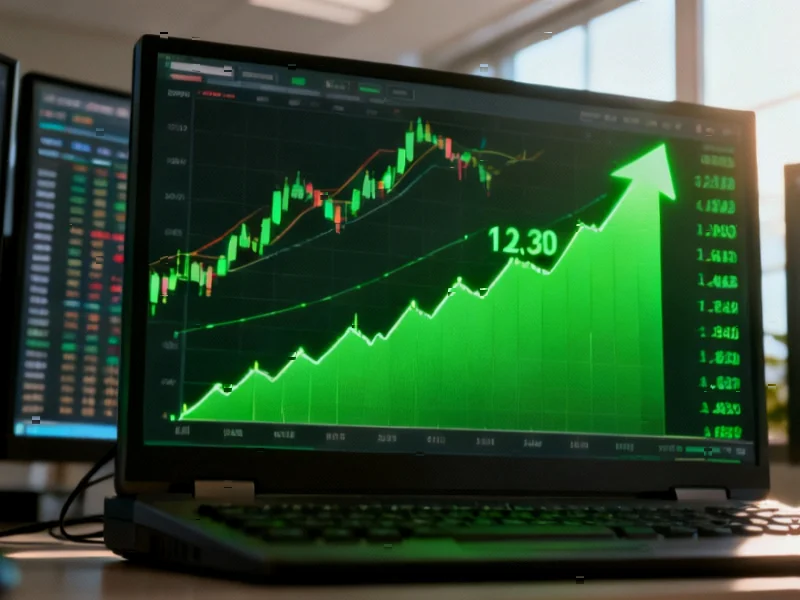According to Financial Times News, Donald Trump and Xi Jinping have agreed to a one-year trade truce that postpones export controls on rare earths and chips following their summit in Busan, South Korea. The agreement includes suspending China’s rare earths export controls and US technology export controls to Chinese subsidiaries, while reducing fentanyl-related tariffs from 20% to 10% and addressing shipping industry levies. President Trump described the meeting as “a 12” on a 0-10 scale and announced plans for reciprocal visits, with him traveling to China in April. The deal comes just before a previous truce was set to expire next month, which would have triggered tariffs exceeding 100%. This temporary resolution provides breathing room but leaves fundamental tensions unresolved.
Table of Contents
- The Rare Earths Standoff: Temporary Relief, Long-Term Vulnerability
- Semiconductor Deal Reveals Strategic Gaps
- Fentanyl Tariff Reduction: Political Symbolism Versus Practical Impact
- Underlying Structural Tensions Remain Unaddressed
- Business Implications: Calculated Uncertainty
- Geopolitical Calculus: Managed Competition Continues
- Related Articles You May Find Interesting
The Rare Earths Standoff: Temporary Relief, Long-Term Vulnerability
The suspension of China’s rare earths export controls represents a critical but temporary de-escalation in a high-stakes resource war. Rare earth elements are essential for everything from electric vehicles and wind turbines to advanced military systems, and China currently controls approximately 80-90% of global processing capacity. What makes this suspension particularly significant is that it comes just weeks after China imposed sweeping controls, demonstrating how quickly these minerals can become geopolitical leverage. The one-year timeframe gives both sides breathing room, but doesn’t address the fundamental vulnerability of Western supply chains. Companies dependent on these materials now have a narrow window to diversify sources or develop recycling technologies, though building alternative supply chains typically requires 5-10 years of sustained investment.
Semiconductor Deal Reveals Strategic Gaps
While the agreement mentions discussions about Nvidia exporting chips to China, the explicit exclusion of “the most advanced microelectronics” reveals the enduring technological divide. This suggests the deal primarily covers mature node semiconductors rather than cutting-edge AI chips or advanced manufacturing equipment. The semiconductor industry has become the central battleground in US-China tech competition, with export controls increasingly targeting specific performance thresholds. What’s notably absent from this agreement is any framework for managing future technological developments, meaning both sides remain free to impose new restrictions as innovation progresses. The temporary nature of this truce means semiconductor companies must continue operating with the assumption that access could be restricted again in 2025, complicating long-term investment decisions.
Fentanyl Tariff Reduction: Political Symbolism Versus Practical Impact
The reduction of fentanyl-related tariffs from 20% to 10% represents more political theater than substantive policy change. While fentanyl precursors have been a recurring point of tension, the actual economic impact of these specific tariffs is minimal compared to the broader trade landscape. The gesture acknowledges China’s recent enforcement efforts while maintaining pressure through the remaining 10% levy. More importantly, it sets a precedent for incremental tariff reductions that could be replicated in future negotiations. However, the complex chemical supply chains involved in fentanyl production mean that enforcement remains challenging, and the reduction doesn’t address the sophisticated networks that have emerged to circumvent existing controls.
Underlying Structural Tensions Remain Unaddressed
Despite the temporary truce, the fundamental conflicts driving US-China technological competition remain unresolved. The agreement essentially hits pause on immediate escalations without creating mechanisms to manage the underlying competition in artificial intelligence, quantum computing, and other dual-use technologies. The fact that Trump and Xi didn’t discuss Taiwan suggests both leaders recognized the sensitivity of core sovereignty issues, but this omission means one of the most potentially explosive flashpoints remains unmanaged. The one-year review process creates recurring negotiation pressure points that could either foster stability through regular dialogue or generate constant uncertainty for businesses operating across both markets.
Business Implications: Calculated Uncertainty
For multinational corporations, this agreement creates a predictable environment for exactly one year—both a blessing and a curse. Companies can now make near-term decisions with reduced risk of immediate tariff escalations, but the lack of long-term certainty complicates major capital investments and supply chain restructuring. The technology sector faces particular challenges, as the temporary nature of the semiconductor and rare earths arrangements means R&D decisions must account for potential future restrictions. The mention of potential energy deals involving Alaska suggests both sides are exploring commercial confidence-building measures, but these remain speculative without concrete details. Businesses operating in China now face a recurring annual negotiation cycle that could make strategic planning increasingly difficult.
Geopolitical Calculus: Managed Competition Continues
This agreement represents the latest evolution in managed competition between the world’s two largest economies. The reciprocal visits scheduled for 2025 create regular leader-level engagement that could help prevent misunderstandings, but also institutionalize a pattern of last-minute negotiations. The different reactions from China experts—with some seeing Chinese advantage and others viewing this as pragmatic management—highlight how both sides can claim tactical victories while the strategic competition continues unchanged. What’s most significant is the establishment of a predictable cycle for managing tensions, even if the tensions themselves remain fundamentally unresolved. This suggests both powers have accepted that complete decoupling is impractical, but deep trust remains elusive.



